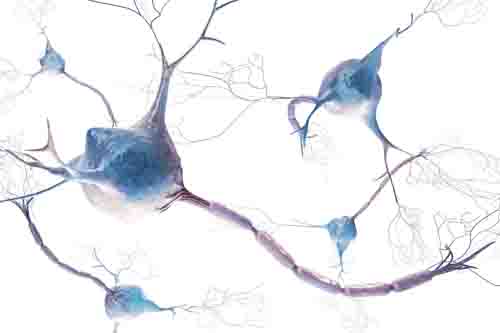Neurodegenerative Disorders
 Neurodegenerative diseases include many disorders characterized by a progressive loss or dysfunction of neurons in the central nervous system (CNS) or peripheral nervous system (PNS). Amyotrophic lateral sclerosis (ALS), Parkinson's disease (PD), Huntington's disease (HD), Alzheimer's disease (AD), and frontotemporal lobar degeneration (FTLD) are all neurodegenerative diseases.
Neurodegenerative diseases include many disorders characterized by a progressive loss or dysfunction of neurons in the central nervous system (CNS) or peripheral nervous system (PNS). Amyotrophic lateral sclerosis (ALS), Parkinson's disease (PD), Huntington's disease (HD), Alzheimer's disease (AD), and frontotemporal lobar degeneration (FTLD) are all neurodegenerative diseases.
A common feature in most neurodegenerative diseases is the progressive accumulation of misfolded damaged proteins that are prone to aggregate and are involved in several cellular stress functions resulting in cell death. Although the mechanisms of action in neurodegenerative diseases are unclear, the potential underlying mechanisms can be divided into two categories. The first, unique to each neurodegenerative disease, is a trigger that will initiate the primary disease events in the specific disease target. The second, which is thought to be more universal among neurodegenerative diseases, is the consequential process which includes cascade of cellular process, neuro-inflammation, and death of neurons by apoptosis.
Akt signaling is a major pro-survival signaling pathway in many cells and is affected in the main neurodegenerative diseases. Down regulation of Akt pathway is a key element in neurodegenerating disease deterioration.
Akt and its signaling pathway is therefore a worthy target for drug development in a variety of neurodegenerative diseases.
ALS
 Amyotrophic lateral sclerosis (ALS), also known as Lou Gehrig’s Disease, is a rapidly progressive, neurodegenerative disease characterized by selective death of motoneurons in the motor cortex, brainstem, and spinal cord. Patients with ALS experience progressive and irreversible muscle paralysis, which leads to death. 90% of ALS cases are sporadic (sALS), with unknown etiology, and the rest are genetically determined (familial, fALS). Key genes that are associated with increased ALS risk are known to affect the activity of the Akt pathway. The average disease onset age is approximately 50 years. The median reported survival from diagnosis is about 24 months.
Amyotrophic lateral sclerosis (ALS), also known as Lou Gehrig’s Disease, is a rapidly progressive, neurodegenerative disease characterized by selective death of motoneurons in the motor cortex, brainstem, and spinal cord. Patients with ALS experience progressive and irreversible muscle paralysis, which leads to death. 90% of ALS cases are sporadic (sALS), with unknown etiology, and the rest are genetically determined (familial, fALS). Key genes that are associated with increased ALS risk are known to affect the activity of the Akt pathway. The average disease onset age is approximately 50 years. The median reported survival from diagnosis is about 24 months.
ALS is considered a multisystemic disease with broad pathophysiological framework. It is associated with the accumulation of misfolded proteins and insoluble inclusions such as TDP-43 in the sporadic disease and superoxide dismutase type-1 (SOD1) in some of the genetic disease cases. Its pathophysiological mechanisms include oxidative stress, mitochondrial impairment, protein aggregation, cytoskeletal disruption, Nucleocytoplasmic Transport, glucose metabolism, glutamate and neuronal cytotoxicity, altered regulation of gene expression, inflammation and apoptotic cell death Akt activity was found to be down-regulated in post-mortem analysis of ALS patients motor neurons, as well as in neurons and muscles of ALS animal models. Akt inactivation is detected already at the pre-symptomatic disease stages and increases with disease progression. Akt down regulation correlates with rapid ALS progression.
There is no cure for ALS. The effect of current treatment options for ALS is limited. All FDA approved drugs: Riluzole, Radicava and recently approved Qalsody (for a rare ALS inducing mutation) and Relyvrio, deliver only a modest slowdown of ALS disease progression. So far only Riluzole is approved by the European regulators (EMA).
Recent years have brought a wealth of new scientific understanding of this disease. This brings hope that a breakthrough in the treatment of ALS is closer than ever.
